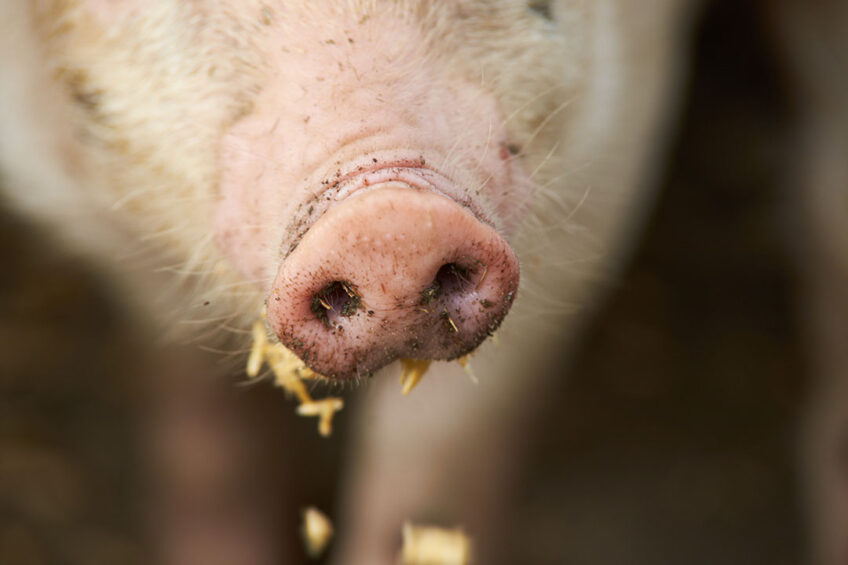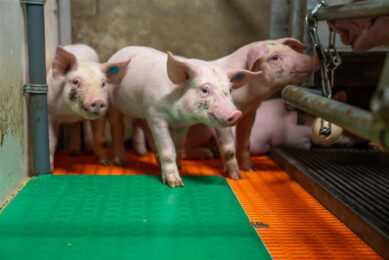Effect of feed flavours on weaned pig performance

The change in piglet diets from milk to solid feed during weaning is stressful. Flavour supplementation could help ease the transition and increase feed intake.
The modern swine industry relies on sustainable, efficient, cost-effective pig production. Controlling and monitoring pigs’ feeding behaviour is essential to reduce operational costs and to manage the critical points of the production system. Nutrient intake is greatly influenced by, among other things, the flavour and taste of the feed. Pigs are sensitive to palatability, and they consume less of diets low in palatability than of diets high in palatability.
This is why using flavour supplementation could be a useful way to increase feed intake during weaning.
Flavour preferences in pigs
Pigs’ feed preferences are usually established early on through maternal learning during the gestation and lactation periods. During the gestation period, flavour cues and nutrients derived from the maternal diet in utero can reach the foetus through the amniotic fluid and the placental blood stream, which leads to establishing certain flavour preferences in pigs later in life. It can positively affect feed acceptance both pre- and post-weaning. During the lactation period, flavours may be imparted through the milk.
Flavours added in maternal diets before or after birth (maternal learning) could smooth the weaning changes and optimise pigs’ production performance
Benefits of flavour supplementation
Dietary transition of weanling pigs from the sows’ milk to solid food is a slow and non-prolific phase of production. Weaning is stressful for piglets because they have to face social stress by mixing with other pigs as well as adapting to eating a novel solid diet. Therefore, feed ingredients should be considered when formulating diets for newly weaned pigs. Flavours added in maternal diets before or after birth (maternal learning) could smooth the weaning changes and optimise pigs’ production performance. Flavour additives have the potential to increase feed consumption during the weaning period through increased aroma attraction and palatability.
It was observed that piglets previously exposed to an aniseed flavour during late gestation had higher feed intake, increased weight gain and reduced incidence of diarrhoea on the first day post-weaning. Moreover, a reduction in the number of common aggressions and lesions that occur after weaning were reported. Therefore, pre-natal exposure to the aniseed flavour (via amniotic fluid) through the sow diet could reduce post-weaning-related problems by reducing piglet stress with a positive reward.
Feed intake seems to be regulated more by physiological factors than by the taste of the feed. However, the strategic use of flavours may be beneficial under certain conditions such as the first week post-weaning when the pig is in a dietary transition from the sow’s milk to solid food, when there are changes in diet formulations, during heat stress and to mask the taste of dietary ingredients with relatively low palatability. Further research is needed on the concept of early flavour experiences to find out whether perinatal and social interaction flavour learning increase post-weaning feed acceptance due to flavour association.











